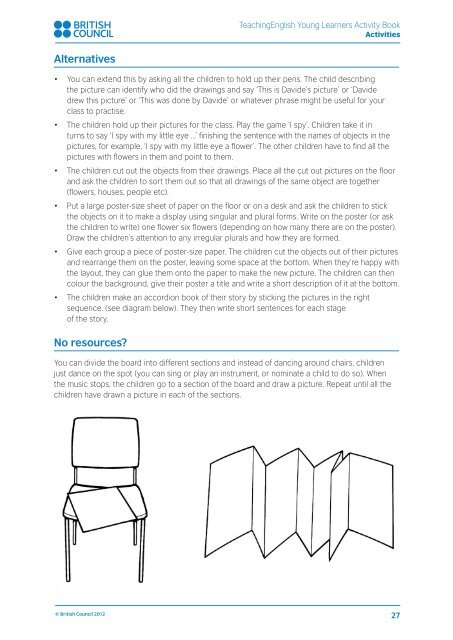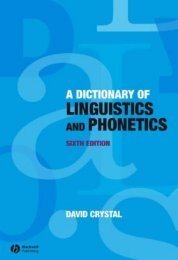url?sa=t&source=web&cd=3&ved=0CC0QFjAC&url=http://www.teachingenglish.org.uk/sites/teacheng/files/B369-Young-Learners-Activity-Book_v10
url?sa=t&source=web&cd=3&ved=0CC0QFjAC&url=http://www.teachingenglish.org.uk/sites/teacheng/files/B369-Young-Learners-Activity-Book_v10
url?sa=t&source=web&cd=3&ved=0CC0QFjAC&url=http://www.teachingenglish.org.uk/sites/teacheng/files/B369-Young-Learners-Activity-Book_v10
Create successful ePaper yourself
Turn your PDF publications into a flip-book with our unique Google optimized e-Paper software.
TeachingEnglish <strong>Young</strong> <strong>Learners</strong> <strong>Activity</strong> <strong>Book</strong><br />
Activities<br />
Alternatives<br />
• You can extend this by asking all the children to hold up their pens. The child describing<br />
the picture can identify who did the drawings and say ‘This is Davide’s picture’ or ‘Davide<br />
drew this picture’ or ‘This was done by Davide’ or whatever phrase might be useful for your<br />
class to practise.<br />
• The children hold up their pictures for the class. Play the game ‘I spy’. Children take it in<br />
turns to say ‘I spy with my little eye ...’ finishing the sentence with the names of objects in the<br />
pictures, for example, ‘I spy with my little eye a flower’. The other children have to find all the<br />
pictures with flowers in them and point to them.<br />
• The children cut out the objects from their drawings. Place all the cut out pictures on the floor<br />
and ask the children to sort them out so that all drawings of the same object are together<br />
(flowers, houses, people etc).<br />
• Put a large poster-size sheet of paper on the floor or on a desk and ask the children to stick<br />
the objects on it to make a display using singular and plural forms. Write on the poster (or ask<br />
the children to write) one flower six flowers (depending on how many there are on the poster).<br />
Draw the children’s attention to any irregular plurals and how they are formed.<br />
• Give each group a piece of poster-size paper. The children cut the objects out of their pictures<br />
and rearrange them on the poster, leaving some space at the bottom. When they’re happy with<br />
the layout, they can glue them onto the paper to make the new picture. The children can then<br />
colour the background, give their poster a title and write a short description of it at the bottom.<br />
• The children make an accordion book of their story by sticking the pictures in the right<br />
sequence. (see diagram below). They then write short sentences for each stage<br />
of the story.<br />
No resources?<br />
You can divide the board into different sections and instead of dancing around chairs, children<br />
just dance on the spot (you can sing or play an instrument, or nominate a child to do so). When<br />
the music stops, the children go to a section of the board and draw a picture. Repeat until all the<br />
children have drawn a picture in each of the sections.<br />
© British Council 2012<br />
27





